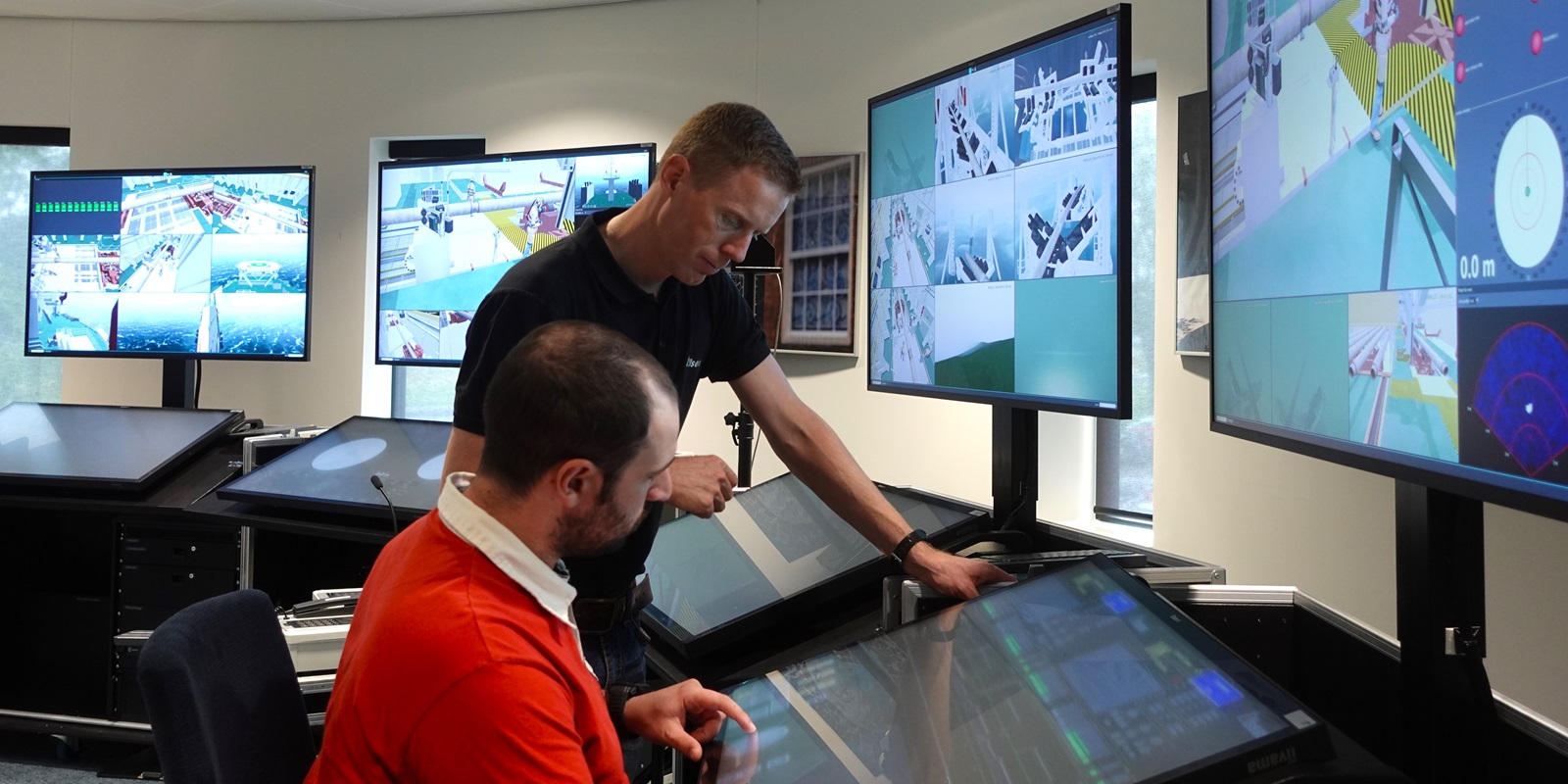The Value Of Simulators For Training Teams In Offshore Operations

Companies involved with complex and expensive offshore operations are understandably risk-averse. That’s because the smallest error can be costly to put right. The obvious way to mitigate safety, financial, reputational, and environmental risks is to deliver team training in a safe environment – so that everyone involved knows their role within the team.
But that’s easier said than done. While it’s true that teams can learn together ‘on the job’, or through theoretical exercises, how do they adequately prepare for the reality of complex and dangerous operations in difficult conditions or even an unexpected disaster? The answer is team training using an advanced simulator.
All your training needs in one simulator
Safely and efficiently carrying out complex operations not only requires operators who are highly skilled, it also takes teamwork, and preparedness. ‘Learning on the job’ is something of a contradiction because no one wants operators to be training during a real-life emergency. Instead, companies need a way to facilitate realistic practice using real-world equipment and communication channels.
Most companies involved in offshore operations need three types of training:
- First, there’s operator training, which focuses on an individual’s ability to correctly use a piece of equipment.
- Second, there’s Crew Resource Management (CRM) which focuses on how teams work together to get the job done. It’s all about teamwork, communication, and situational awareness – the ability to perceive and respond to any given scenario.
- Third, there’s Management Of Major Emergencies (MOME) training. During a major incident, the bridge gets flooded with information from various teams from internal fire and medical officers to nearby ships and medevac helicopters. This type of training prepares the upper management of a ship for responding to worst-case scenarios.
The great news for companies involved with offshore operations is that it’s possible to handle every type of training through one simulator.
Realistic teamwork training for complex operations
It’s one thing to invest in simulators that replicate real-world offshore equipment. It’s quite another to facilitate real-life teamwork within a realistic, simulated environment where off-normal working conditions can be introduced with a mouse click. That’s exactly what a Tree C simulator can do.
Take an emergency training scenario, for example. Everything is coordinated from the bridge through five or six people including the captain and the deputy, as well as internal and external comms. In case of an emergency, those in charge need to filter and prioritize an influx of incoming information. Teamwork is vital for safety and efficiency. That’s why communication protocols and information processes are so important.
Connect multiple workstations to the same realistic, simulated scene, and you have the ultimate tool for training people in cooperative processes. With identical hardware set up over five or six workstations, each one can be assigned a different role within a training scenario. The Tree C Simulator Framework features realistic CCTV views, control screens and alarm systems and an instructor can prepare any scenario, ranging from normal operation to extreme weather conditions or a severe calamity.
With the flexible simulator framework from Tree C, it’s also possible to balance depth of detail with a company’s training goals. For instance, it may be important to get a particular piece of operational equipment accurately modeled, for the most realistic look and feel, and another which can be easily represented by a more generic asset, sufficient for procedural practice. Where there’s an obvious gain in terms of training, greater depth can be added, while keeping the development process as efficient as possible.
A mobile training solution for global operations
For companies engaged in offshore operations around the world, there’s an obvious training challenge – getting everyone in the same room. It can be time-consuming and expensive to fly team members to a single location.
A Tree C simulator gives companies the flexibility to box up their simulator hardware and software and send it to another location, such as a hotel where the crew are staying ahead of an operation. By bringing a simulator to the crew members – rather than the other way around – time and money is saved.
Training will always take time, but conducting team training in a location where all the crew members are gathered enables companies to optimize their use of time prior to an operation.
Of course, the real benefit is that it gives crew members valuable hands-on experience of communicating and working together in a realistic but safe environment. In that way, a simulator becomes a powerful tool for delivering practical lessons alongside theoretical training.
Image courtesy of Allseas
Discover how Tree C simulators can add value for teams training for offshore operations. Contact us